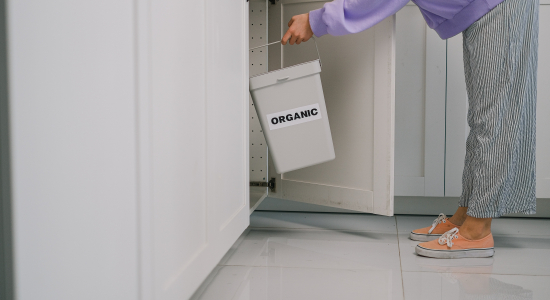Intro Guide to Composting

Photo by SHVETS production
Never composted before and not sure where to start? This guide is for you!
Composting doesn’t have to be intimidating– it’s actually a simple process that does most of the work on its own. You get to dispose of your kitchen scraps and your plants end up with nutrient-dense compost to thrive on!
1. Pick your composting bin
Before you begin composting you need a good setup. If you have an outdoor area to keep your compost pile then you may not even need a compost bin! Just remember to keep your heap on natural ground– not cement or asphalt.
If you’ll be composting inside or just want to contain your compost then a compost bin is a great idea! You can find plastic bins specifically designed for compost at many outdoor supply stores or you can use your own plastic bucket or ceramic container.
Just remember to choose a good open location for your compost bin that allows for aeration, drainage, and partial sunlight! Composting should also be conveniently located for you so that it’s not a hassle.
2. Fill it up!
Once you’re all prepped it’s time to let the fun begin! When starting a compost pile, it’s important to alternate browns and greens to create the foundation. Start with a layer of dry brown matter such as dried leaves, weeds and hay, followed by green waste such as fruits, vegetables, and coffee grounds. Don’t forget to water in between layers to activate the composting process!
My family likes to keep a small bin in our kitchen counter to fill with compost materials as we cook and then empty it into our compost bin each day. Remember that you can’t compost meat, dairy products, oils, or cooked products.
Some materials you can compost include:
- Paper towels
- Bread
- Tea bags
- Coffee filters
- Dry pet food
- Eggshells
3. Wait & aerate
Good things take time– so now we wait! Regularly mixing your compost pile every couple weeks will aerate and combine the materials to speed up the decomposition process. Make sure that your pile is properly draining as well to avoid water buildup. The process takes patience but it's so worth it!
4. Put it to good use
The overall compost process can take up to 12 months depending on the amount of materials. Once your compost pile has turned into a rich dark soil it’s time to put it to use! You can use your compost as a nutrient dense mulch surrounding flowers and bushes or mix it with soil for your indoor plants. Bottom line compost can improve the organic structure of your soil while also keeping food waste out of landfills– so it’s a win-win!